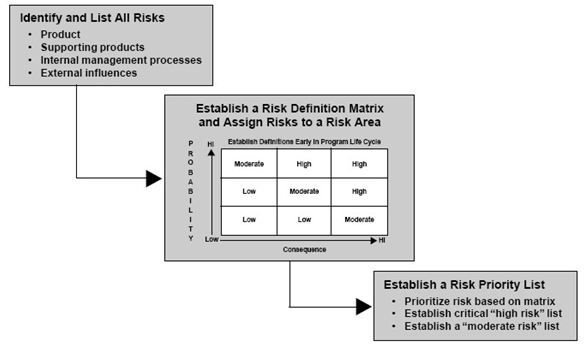Learning the Basics For Project Risk Management: Standards and Responses
First, Assess the Risks
Before embarking on any project, it is critically important to evolve and put in place project risk management standards. If probable risks are not addressed at the outset of the project, they can create adverse effects for the entire project later on.
Properly conceived project risk management standards mean you will be able to complete the project without time and cost overruns. The team members will also feel more relaxed and less stressful when risk factors do not suddenly and unexpectedly crop up impeding the project progress.
Most successful project management professionals insist that risk management must form an integral part of the project because they recognize that every project carries elements of risk. While setting standards for project management, one cannot avoid security risk management standards. As a matter of fact, most project managers make risk management a continuing exercise and include it in all project meetings, and it’s also a part of effective training for project personnel.
By drawing up the risks, you are equipped to handle them if they occur during the project. Risk management standards can be best achieved if all team members with prior personal experiences and expertise contribute to risk management discussions.Interactive brainstorming team sessions are often utilized to identify all the risks factors.
No project management plan, however, no matter how competent, will be able to identify all project risks while setting risk management standards. But if the team explores a number of different risk identification methods, then the possible risk factors will be easier to recognize. Nevertheless, there will be some unanticipated risks that will have to be tackled as they arise.
Merely setting up project risk standards is useless unless the risk elements are properly communicated to all team members and others involved in the project. Experts have identified from evaluating failed projects that in many cases the team staff members were not told of the expected risks. it’s vital to nclude risk communication in the day-to-day operations.
After conceptualizing and recording the project risk standards, project managers must assign the risk responsibility, making it clear which member is responsible for what risk. The risk owner is the person in the team that has the responsibility to ensure the assigned risk does not derail the project. Initially some team members may be averse to assuming this level of responsibility, but as the project progresses there will be a sense of active involvement and the concerned members will become more comfortable in executing the tasks necessary to decrease the threats.
It also needs to be understood that some risks have a higher adverse impact on the project execution than others. Therefore, it is necessary to prioritize risks according to level of risk. The criteria will not only consider the effects of a risk but also the probability of its occurrence and what will be needed to counter it.
There are three ways to deal with risk elements - total avoidance of risk wherever possible, minimizing risks, and, finally, accepting the inescapable risks. Obviously it’s best to be prepared. You can try to prevent a risk occurring by modifying the causes or decreasing the negative effects that risks might entail, but the risk standards must be aimed at implementing effective risk responses.
Image Credit: WikiMedia Commons
